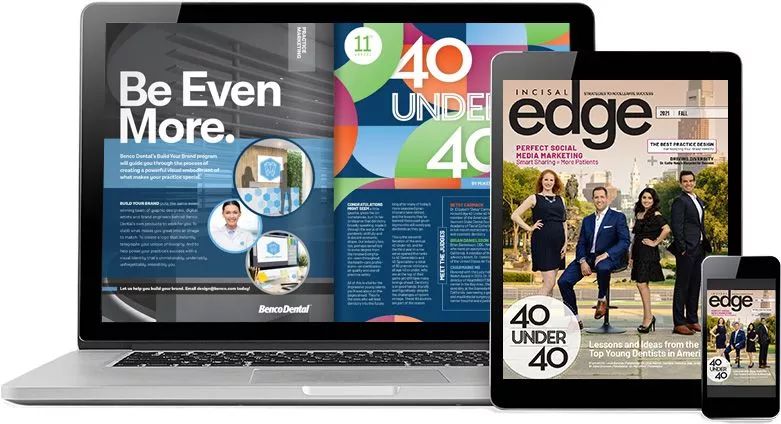In this exclusive excerpt from his new book, Benco Dental’s former interim brand-and-communications director clamors for clear English to help Americans better understand their health care options.
ARE AMERICANS ILLITERATE when it comes to health care? According to a consumer survey by Policygenius, the answer is yes. But are the consumers to blame, or is the health care industry itself?
 Policygenius surveyed 2,000 Americans and asked them a seemingly simple question: Can you define four basic health insurance terms? Deductible, coinsurance, copay and out-of-pocket maximum. A healthy 83 percent of respondents were confident that they “definitely understand” what a copay is, maybe because they have to physically hand money to a receptionist. This compared to 74 percent who were confident that they “definitely understand” what a deductible is; 67 percent who said they knew what out-of-pocket maximum means; and just 47 percent who claimed to understand coinsurance.
Policygenius surveyed 2,000 Americans and asked them a seemingly simple question: Can you define four basic health insurance terms? Deductible, coinsurance, copay and out-of-pocket maximum. A healthy 83 percent of respondents were confident that they “definitely understand” what a copay is, maybe because they have to physically hand money to a receptionist. This compared to 74 percent who were confident that they “definitely understand” what a deductible is; 67 percent who said they knew what out-of-pocket maximum means; and just 47 percent who claimed to understand coinsurance.
But here’s the rub: The percentage of people who could actually recite the correct definition was just 52 percent for copay, 50 percent for deductible, 42 percent for out-of-pocket maximum and 22 percent for coinsurance. Worse, only 4 percent of Americans could correctly define all four terms.
What’s remarkable is that these are not uncommon terms. In fact, they represent some of the main functioning aspects of any health insurance plan. Consumers were likely confident about the words because they recognize them from the inappropriately named document called the “Explanation of Benefits”—inappropriate because it rarely provides a satisfactory explanation, and it is often not beneficial.
The industry gibberish doesn’t stop there, with lists of drugs called “formularies” and Medicare having Parts A, B and D but not C. Terms like “out-of-pocket maximum” are almost intentionally misleading; it sounds like the amount of money a patient has to reach into his or her pocket for to pay for health care, but that definition contains a major asterisk (lawyer-speak for “but there’s fine print”).
That definition is right, asterisk, as long as the doctors you’re visiting are always in your network. If you go out of network, asterisk, your “out-of-pocket maximum” is usually much higher and the in-network and out-of-network amounts are not combined.
Confused yet?
Even more remarkable than the existence of all these confusing terms, though, is that the Policygenius survey is several years old, and health care companies are still using the same language—even though they know consumers don’t understand it.
As is the case with many facets of the customer experience in health care, lawyers and regulators often shoulder the blame. But is this fair? Yes, regulations are lengthy and confusing, and their required language often uses the same confusing industry jargon. And well-intentioned legislation mandates so much of the solution, leaving marketers and customer experience professionals without much leeway for innovation.
But companies also hide behind legislation with answers like “Well, legally we have to do it.” Even if laws required insurance companies to use the word coinsurance, which only 22 percent of Americans understand, how hard would it be for them to define that term for the customer?
Some companies have figured out how to turn legal disclosure into an experience. For example, instead of starting a paragraph of legalese with the word disclaimer, they might say something like “A Word from Our Lawyers” and then try to “translate” the legalese into plain English.
Network Health Wisconsin uses simple language as its competitive advantage. In its Twitter profile, the company notes: “Health insurance causes people stress. That’s beyond ironic. Network Health is determined to fix that.” And on a section of its website entitled “We Speak Your Language,” Network Health Wisconsin says that “When you call Network Health, you won’t be overwhelmed by health insurance language. We talk like people, not insurance dictionaries.”
This is an exclusive excerpt from The Experience Maker: How to Create Remarkable Experiences That Your Customers Can’t Wait to Share, by Dan Gingiss (2021, Morgan James Publishing). Reprinted with permission. For more information, please visit theexperiencemakerbook.com.




